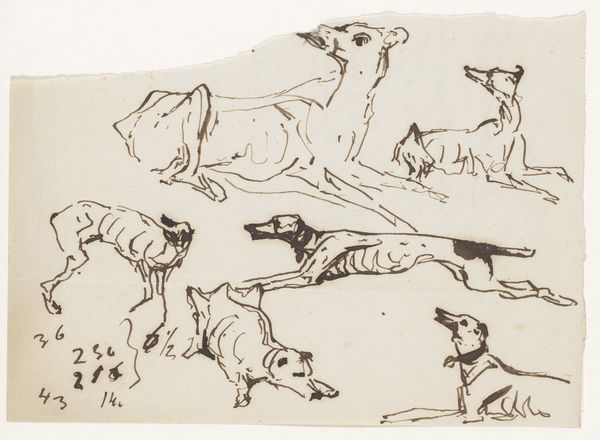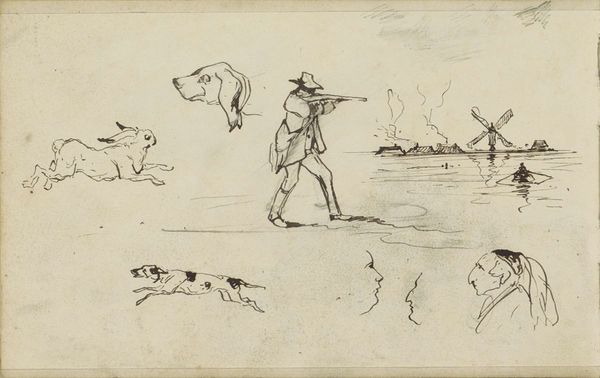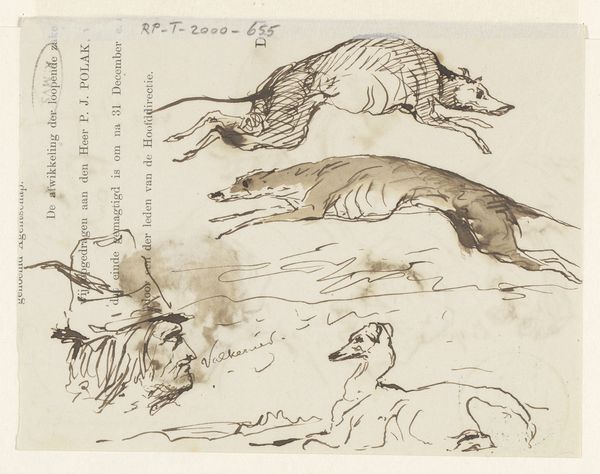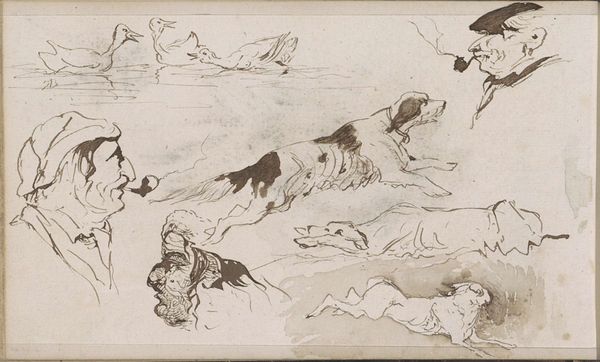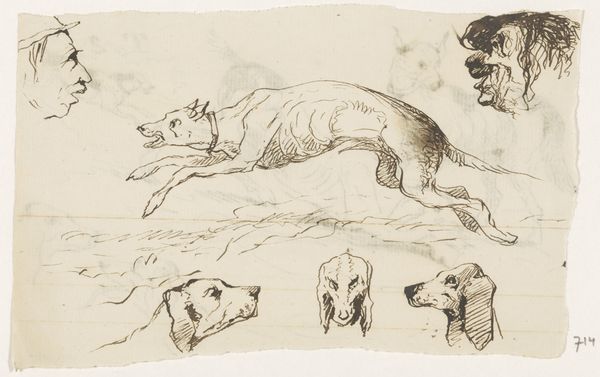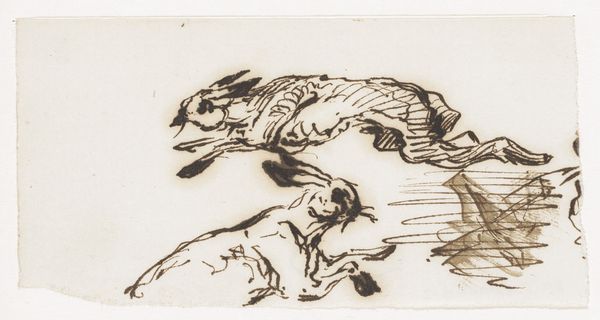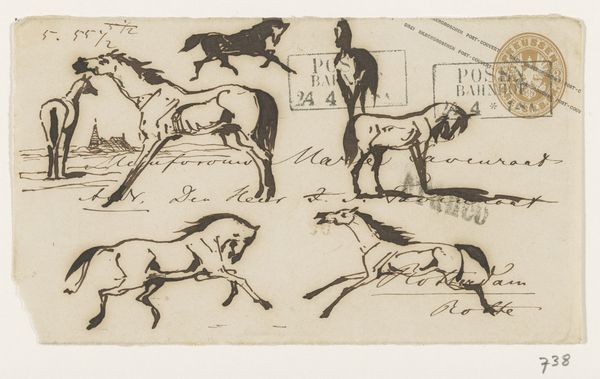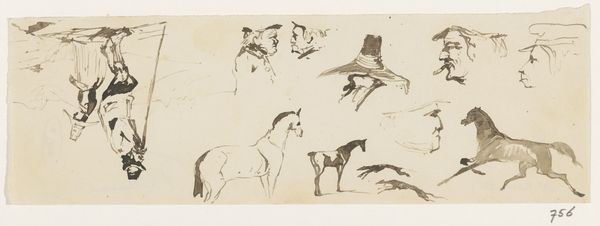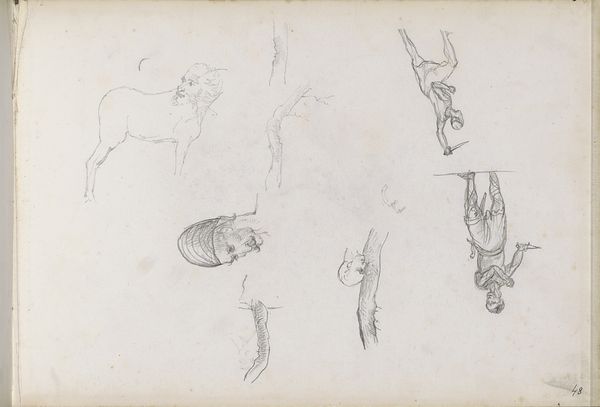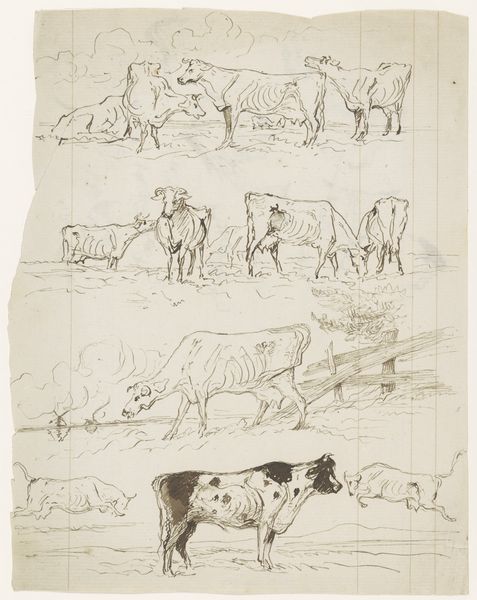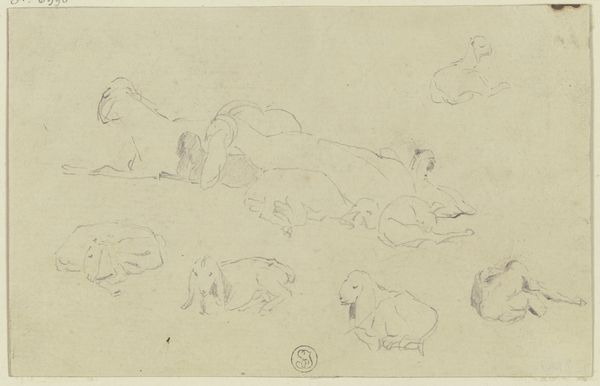
Dimensions: height 120 mm, width 200 mm
Copyright: Rijks Museum: Open Domain
Curator: Looking at this page of studies, “Schetsen van jachthonden” as it's known, created by Johannes Tavenraat sometime between 1840 and 1870, now housed in the Rijksmuseum… what leaps out at you? Editor: The immediacy of it. It’s all swift lines and captured movement, an energy contained on a single sheet of paper. And it feels…masculine, somehow. Curator: Interesting. The image teems with iconographic significance. Notice the prominent rendering of the hunting dogs, archetypal symbols of loyalty, but here also agents in a very class-defined pastime. There's the rabbit, a more ancient symbol, linked to fertility, new beginnings... and, of course, vulnerability. Editor: Yes, and considering this drawing was made using pen and brown ink over graphite, those quickly laid marks speak volumes. Tavenraat isn’t after a polished final product. This is about process—experimenting with form, seeing how the pen interacts with the paper, finding the essential lines needed to convey a chase. Curator: And consider the function of genre-painting itself in that era, typically portraying scenes of everyday life and often idealized visions of pastoral settings… hunting held an odd intersection as a leisure activity involving all classes. Editor: These studies would likely inform a larger, more refined work, yet they hold an appeal precisely because of their roughness. We witness the artist thinking, the raw physicality of making something – not unlike craftwork of the time which employed natural products, by hand. There is evidence of social hierarchy when labor and privilege intertwine in such leisurely activity, and even these sketches become collectible commodities. Curator: You mention process…and it gives rise to multiple narratives around symbols. Does the quick, efficient rendering suggest the normalization of hunting as sport? Or the hare seeming so still - might its position imply a warning to the working man who has just as much of a possibility to rise as a predator? Or even succumb to one. The iconography has so much cultural meaning at play. Editor: It’s all quite compelling – the economic engine underlying even a sketch like this is much more evident than perhaps the casual viewer might recognize. It reveals the means through which power manifests. Curator: A fruitful reflection, certainly adding deeper resonance when interpreting "Schetsen van jachtonden.” Editor: Indeed. It makes one consider that what we perceive and receive involves more than just images or subjects, but the means to producing, reproducing, and assigning values and meaning to them.
Comments
No comments
Be the first to comment and join the conversation on the ultimate creative platform.
